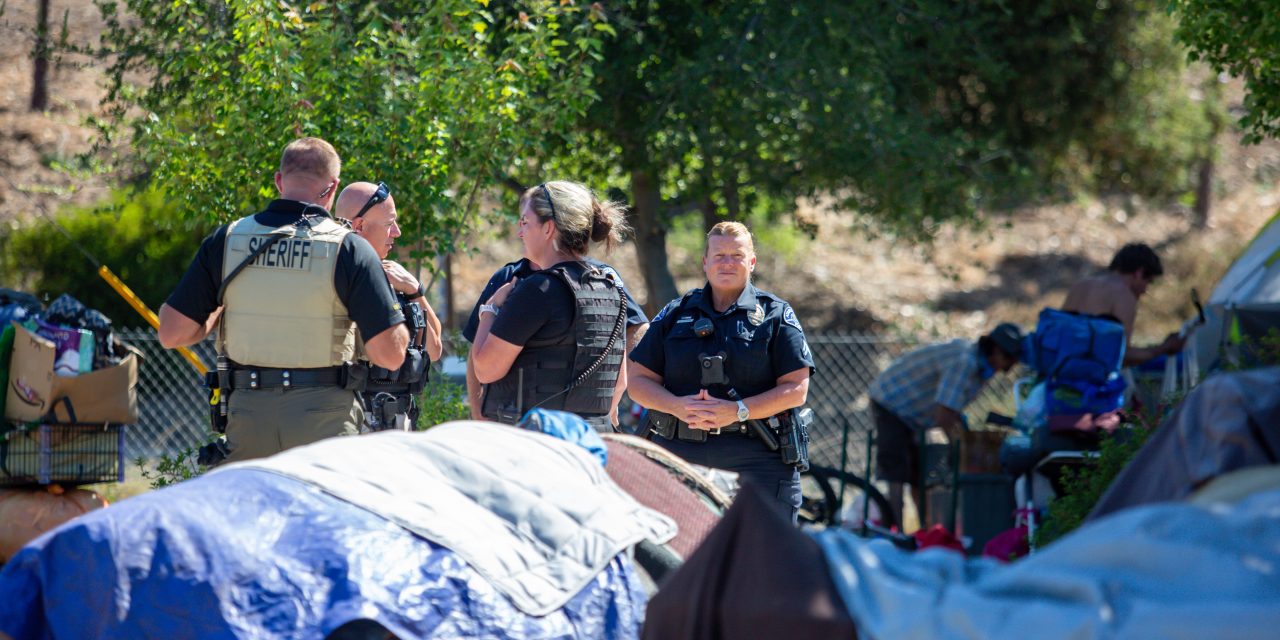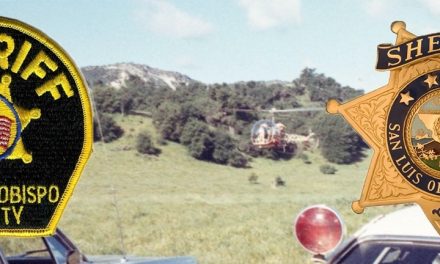An encampment was exposed near the Morro Road offramp after CalTrans trimmed trees
by Camille DeVaul and Nic Mattson
ATASCADERO — Atascadero Police Department (APD), along with outreach programs, worked to evacuate a homeless encampment along U.S. Highway 101 near the southbound Morro Road offramp this week.
After Caltrans trimmed trees and bushes along the offramp, an encampment was exposed, which promoted the evacuation.
According to APD Cpl. Rochelle Hanson, Caltrans moved the encampment from US 101 — which is state property — to the City of Atascadero. The line between is a chainlink fence.
“Citizens are upset,” Hanson said. “They are complaining that it is atrocious and that they are not proud to live in Atascadero anymore.”
Hanson, a member of the APD since 2004, has a long history with the people responsible for the encampment.
“I’ve been talking to these folks year after year after year,” Hanson said. “We provide them with services. We tell them what they need to do. We tell them, ‘these other agencies are here to help you,’ but they don’t want to do what is required of them to get help.”
Atascadero News reached out to the City of Atascadero for comment.
Atascadero Deputy City Manager Terrie Banish said of the encampment, “ECHO was contacted over the weekend regarding the homeless camps to offer assistance. Today, APD along with TMHA (Transitions — Mental Health Association), County Mental health, the THMA Homeless Outreach Team and Salvation Army all offered their services to the people we contact. We can offer the services and provide them assistance.”
“It is up to them to take the assistance offered,” Banish added. “Thus far, the vast majority of those contacted have been contacted multiple times prior and have not followed through to receive any services.”
However, encampment residents offered another side to the story.
Encampment resident Cynthia told Atascadero News when they are told to leave a site, the residents are told to only take what they can carry.
“People take what they can carry and leave the rest,” said Cynthia. “Well, if [cleanup crews] don’t get to it soon, it stays and is consistently associated with the homeless people going and trashing up the places. We are pretty burnt out.”
Cynthia mentions frustration from local Facebook groups making negative comments regarding the encampments.
“We are doing what we are told to do by the officers,” Cynthia said, “and if you go onto Facebook and groups like ‘Everything Atascadero,’ there is thread after thread after thread of nothing but negative saying it is just us going around doing this.”
“I’m not a second-class citizen,” Cynthia said. “I’m a citizen of the United States just like everyone else, and I reside in Atascadero.”
Paso Robles has also had their fair share of resolving encampments, especially in the Salinas Riverbed. In 2020, the city relocated encampment residents to Borkey Flats while the city cleaned up the riverbed to prevent fires.
The temporary relocation camp was not as successful as the city had hoped but was needed to comply with Martin v. City of Boise — a 2018 decision by the U.S. Court of Appeals for the Ninth Circuit in response to a 2009 lawsuit by six homeless plaintiffs against Boise, Idaho, regarding that city’s anti-camping ordinance. The ruling held that cities could not enforce anti-camping ordinances if they do not have enough homeless shelter beds available for their homeless population. However, it did not necessarily mean a city could not enforce any restrictions on camping on public property.
When questioned where the Atascadero would be relocating the encampment residents, Banish said, “Depending on which agency they reach out to for assistance, along with their needs for service, would determine the next steps on where they will go.”
“The city is always working with our unhoused population to provide resources whether that is on city or private property,” Banish added. “APD works with the proper agencies to provide the necessary support and services.”
“If someone doesn’t want help, they are not going to get help,” Hanson said. “That is the heartbreaking part for me. There are resources out there and ways of getting off the streets. I’ve seen it, and it is a very small percentage, but it works. They have to be ready to accept help, and a lot of them are not ready.”
Hanson adds, “If you look at the creeks, and these folks are in the creeks and the waterways, and they are defecating, urinating, and littering — that is all our waterways. That is our water — your water, my water, the city’s water, and the Earth’s water. They are just completely obliterating our waterways. That’s not fair.”
In Atascadero — as with the rest of California —everyone from the encampment residents to the business owners, to the visitors and public employees are forced to face the balance between compassion and accountability. The officers balance the pressures from the taxpayer demanding a safe and clean city and the compassion asked for by people living in tents on the sides of highways, creeks, and riverbeds.
“We are not here to make people’s lives miserable,” Hanson said. “We have plenty to do. It’s not what we are here for. We are here to essentially offer services, day in and day out.”

















